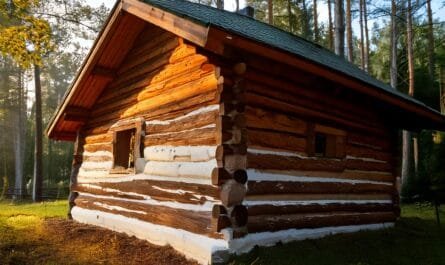Doug and Stacy, known for their off-grid lifestyle, have spent over 13 years without relying on public utilities. In their video, they walk viewers through their journey of adopting solar power, highlighting both the challenges they faced and the lessons they learned. Their story offers practical advice and insights for anyone curious about transitioning to solar energy, particularly in remote, off-grid settings.
Living Off-Grid: The Early Years
For more than a decade, Doug and Stacy relied entirely on a generator to power their modest lifestyle in a log cabin. Their power strategy was simple: they would turn on the generator only when they needed energy, learning to live minimally without excess electricity. Despite the convenience solar energy could offer, they hesitated to adopt it initially due to doubts about its cost-effectiveness and reliability.
A couple of years ago, they decided to explore solar energy to make their off-grid lifestyle more sustainable. Their journey into solar power, however, began with a major setback when they partnered with a company that provided faulty equipment.
A Cautionary Tale: Buyer Beware
The first solar company they worked with sent over a complete solar package, which Doug installed himself, building a small structure to house the panels and wiring everything according to the company’s instructions. However, from day one, the system did not work. To make matters worse, the company refused to offer technical support or a refund, leaving Doug and Stacy with a deep freezer full of perishable food and a malfunctioning solar system. This failure pushed them to temporarily abandon the idea of solar power.
It wasn’t until recently that a new company, Renogy, reached out to them. After explaining their previous experience, Doug agreed to give solar another try on the condition that Renogy first fix the issues with their existing system. Renogy technicians provided detailed instructions and troubleshooting support, helping Doug connect the old and new components correctly. This time, the setup worked seamlessly, restoring Doug’s faith in solar power.
Setting Up the Solar System

Doug’s solar power system now includes several key components, each critical in powering their homestead. A DC combiner box connects nine solar panels grouped in threes to maximize efficiency. The electricity collected from the panels feeds into a 48V solar inverter charger, which manages both power conversion and battery charging.
The system is supported by three lithium-ion phosphate batteries, which offer several advantages, including long life cycles, low heat generation, and the ability to charge in cold conditions thanks to built-in self-heating technology. This feature ensures the batteries can store energy efficiently, even during harsh winters when sunlight is limited.
Doug explains the practical wiring setup in the video, demonstrating how the positive and negative lines from each panel group feed into the combiner box. From there, the energy is transferred to the inverter, which powers essential appliances like their refrigerator, deep freezer, LED lights, modem, and television.
Solar Performance and Practical Usage
Even though Doug and Stacy don’t use much electricity, the solar system has proven to be a reliable source of power. It keeps their refrigerator and deep freezer running smoothly, even on cloudy days. Doug notes that during periods with limited sunlight, they rely on their generator to charge the batteries. This backup system ensures they always have power, a crucial safeguard for harsh winter months when electricity is needed to keep their heater running.
In the video, Doug emphasizes the simplicity and affordability of their solar setup. He estimates that a similar system, including panels, batteries, and essential components, would cost between $6,000 and $8,000. He encourages viewers to consider this type of system, especially for off-grid living, as it offers reliable energy at a reasonable price.
Doug also assures his audience that his review of the Renogy system is unbiased. Although Renogy provided the equipment for testing, he is not paid for promoting their products. He shares his honest experience to help others make informed decisions about adopting solar energy for off-grid use.
Simple Solar Setup Explained for a Self-Sufficient Future
Doug and Stacy’s journey into solar energy illustrates both the potential challenges and rewards of adopting off-grid solar systems. While their initial attempt with another company ended in frustration, the successful installation of the Renogy system has transformed their homestead. The transition to solar energy has not only made their lifestyle more sustainable but also given them a reliable source of power for everyday needs.
Doug believes that with the right guidance, anyone can set up a similar system. He encourages viewers to explore the possibilities of solar power, emphasizing that a small investment can go a long way in ensuring self-sufficiency and resilience in an off-grid environment.


